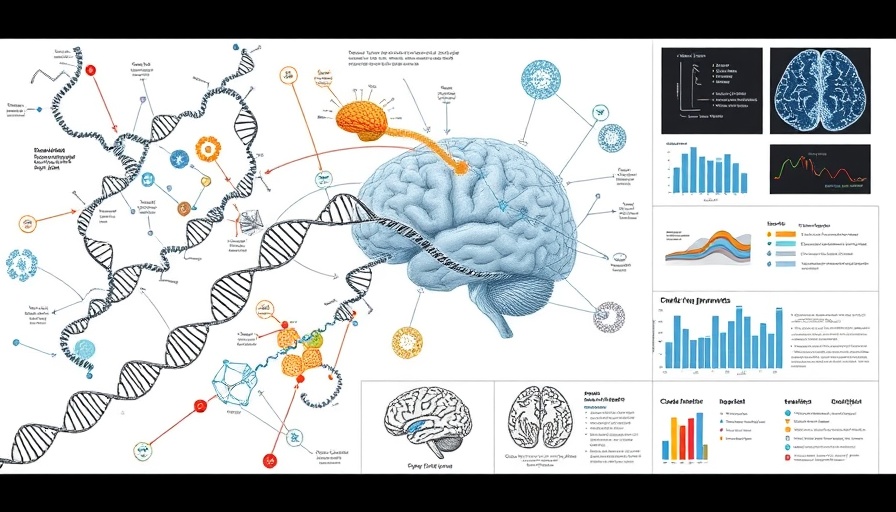Did you know that over 70 million Americans struggle with digestive health issues? If you've ever wrestled with discomfort, bloating, or acid reflux, you’re not alone—and you could be just one healthy gut supplement away from a life-changing turn for the better. This article dives into surprising science, compares top products, and helps you find the healthy gut supplements that match your personal needs. Ready to finally feel your best?Revealing the Power of Healthy Gut Supplements: Surprising Insights for Digestive HealthDid you know that over 70 million Americans suffer from digestive health issues? Discover how healthy gut supplements could be the game-changer you need.Your digestive system is crucial to your overall feeling of vitality. From absorbing nutrients to protecting your immune system, gut health plays a role in nearly every aspect of your wellbeing. Healthy gut supplements —including digestive enzyme blends, probiotics, and prebiotics—offer more than just relief from discomfort; they champion your daily health. Studies increasingly confirm that the right gut health supplement can help balance beneficial bacteria, reduce acid reflux, and boost nutrient absorption.Choosing the right digestive enzyme or probiotic supplement may seem overwhelming given the vast array of options. However, with a science-backed approach and clear understanding of the benefits, you’ll be empowered to select products that make a noticeable difference—often in just a few weeks. These supplements not only target the source of digestive challenges but also work to restore balance and harmony to your digestive tract, leaving you feeling renewed, energetic, and comfortable each day.Why Healthy Gut Supplements Matter for Optimal Digestive HealthThe Connection Between Gut Health and Overall WellnessImportance of digestive enzyme and digestive enzymesKey gut health supplements and their impact on daily wellbeingYour gut is often called your "second brain" for good reason. The digestive tract does far more than process food; it influences mood, immunity, and even cognitive function. The balance of good bacteria —also known as your gut microbiome —determines how well you absorb nutrients and fight off harmful invaders. Digestive enzyme supplements help break down food efficiently, reducing issues like bloating or indigestion, and ensuring you get the most from every meal.Modern lifestyles, processed foods, and stress can damage this delicate system. Gut health supplements like probiotics and prebiotics fill these gaps. Taking these health supplements may help support a balanced microbiome, support your immune system, and keep you feeling your best—inside and out. The result is not just improved digestive health but better sleep, stronger immunity, and a greater sense of wellbeing. How Healthy Gut Supplements Work: Science Behind Digestive Enzyme and Probiotic FormulasDigestive Enzyme Benefits and MechanismsHow digestive enzymes and dietary supplements break down food for absorptionDigestive enzymes are specialized proteins produced naturally by your body that help break down the food you eat into absorbable nutrients. While your body makes some enzymes, factors like age, stress, and certain health concerns can reduce production, leading to issues such as uncomfortable bloating, gas, or acid reflux . Supplementing with digestive enzyme blends can compensate for these deficiencies, helping your body efficiently process proteins, carbohydrates, and fats.When you take a high-quality digestive enzyme dietary supplement, it starts working as soon as it encounters food in your stomach. Enzymes target specific nutrients: proteases break down proteins, amylases handle carbohydrates, and lipases digest fats. By facilitating complete digestion and reducing workload on your digestive organs, these supplements can support regular bowel movements, more energy, and an improved ability to absorb nutrients.Beyond comfort, a well-functioning digestive system contributes to a vibrant overall health picture. Many health supplement formulas also include added prebiotic fiber, which feeds healthy gut bacteria and fortifies your microflora for ongoing benefits.Probiotics, Prebiotics, and Taking Probiotics: Balancing the MicrobiomeRole of healthy gut supplements in supporting the microbiomeProbiotics are live beneficial bacteria naturally present in fermented foods like yogurt and sauerkraut. When taken as a probiotic supplement , they help restore the optimal balance of good bacteria, particularly after antibiotics or dietary changes have disturbed your microbiome. Prebiotics—found in dietary fibers—serve as food for these beneficial microbes , creating a healthy environment in your digestive tract.By regularly taking probiotics and ensuring your supplement contains a variety of clinically studied strains, you help your body combat harmful bacteria and create a more resilient immune system. This harmonious environment can reduce digestive complaints such as acid reflux or irregularity, while helping support overall digestive health and comfort.Combined with a balanced diet and careful supplement selection, these ingredients in gut health supplements act synergistically to refresh, heal, and maintain your digestive environment for the long term. The Top Gut Health Supplement: Features, Benefits, and ReviewsWhen choosing a digestive enzyme, look for formulas tailored to your main concerns. For example, some digestive enzyme supplements are designed specifically to target acid reflux by increasing stomach acid or accelerating protein breakdown. Others blend key enzymes and probiotics for comprehensive digestive tract support, easing bloating and promoting regularity. Many leading health supplements incorporate additional nutrients or herbal extracts, such as ginger or turmeric, to provide anti-inflammatory benefits alongside their enzyme and probiotic content. Reading the label and looking for clinically studied ingredients ensures you're investing in a gut health supplement that will deliver reliable results for your needs. Keep in mind that supplement quality and user reviews should guide your selection, as well as consultation with your healthcare provider if you have existing medical conditions.Whether your digestive health concerns include food sensitivities, occasional discomfort, or lasting wellness, today’s top dietary supplement options offer solutions that make a daily difference.Choosing the Right Healthy Gut Supplements for Your NeedsKey Ingredients to Look For in a Gut Health SupplementDigestive enzyme blends, probiotic strains, dietary supplement variationsWhen evaluating gut health supplements , focus on ingredient transparency and efficacy. Look for comprehensive digestive enzyme blends that target multiple food groups—protein, fat, and carbohydrates—to ensure maximum nutrient breakdown and less gastrointestinal distress. The presence of clinically studied probiotic strains is just as vital; common examples include Lactobacillus and Bifidobacterium species, proven to enhance gut flora and immunity.Prebiotic fibers amplify these effects by nourishing your good bacteria, while dietary supplement options that add herbal extracts, like peppermint or licorice, can soothe sensitive digestive systems. Remember to pay attention to the formulation—capsules, powders, and chewables each offer different advantages based on absorption and personal preference. For most, a balanced combination of digestive enzymes, probiotics, and prebiotics delivers the most noticeable impact.Tailoring your supplement choice to accommodate your specific digestive concerns—such as acid reflux, lactose intolerance, or bloating—will provide more targeted and effective relief. Don’t hesitate to seek guidance from a healthcare provider for chronic digestive issues, allergies, or underlying conditions.Potential Side Effects and Safe Usage GuidelinesCommon side effects and who should avoid certain gut health supplementsMost people can safely enjoy the benefits of digestive enzymes , probiotics, and dietary supplements. However, it's important to understand potential side effects, such as mild bloating, gas, or changes in bowel habits in the first few days of use. These effects usually subside as your body adjusts to new good bacteria or enzymes. Those with compromised immune systems, individuals on immunosuppressant medications, or those with severe food allergies should consult their healthcare provider before starting a new health supplement.It’s crucial to read the label for dosing instructions and ingredient lists, especially if you’re sensitive to dairy, soy, or gluten. Not all supplements are regulated by the FDA, making consumer vigilance essential. Consistency is key—take your supplement as directed for best results, and always discuss new additions with your medical center or primary care provider for comprehensive digestive health management.“A healthy gut is the gateway to a healthy life. Quality supplements can offer transformative benefits.” — Leading Digestive Health SpecialistWhat to Expect: Results, Timelines, and Measuring Improvement with Healthy Gut SupplementsPractical timelines for noticing digestive health and wellness benefitsTracking improvements in symptoms such as acid reflux and bloatingMost users of gut health supplements report initial improvements—less bloating, fewer digestive upsets, and greater comfort—within one to two weeks. Probiotic and enzyme formulas start to shift your gut microbiome quickly, though full benefits usually peak after a month of consistent use. Tracking your digestive symptoms, energy levels, and even skin clarity can help quantify progress. If improvements plateau or negative side effects emerge, revisit your supplement dosage or formulation with your healthcare provider’s guidance.Look for changes in key benchmarks: reduced episodes of acid reflux, more regular bowel movements, and an overall sense of wellbeing. Maintaining a food and symptom journal can offer valuable insights into which formulas or routines serve you best. With patience and diligence, the results of a quality health supplement regimen can become a transformative part of your daily routine. People Also Ask: Expert Answers on Healthy Gut SupplementsWhat supplement is best for gut health?The best gut health supplements typically contain a blend of digestive enzymes, probiotics, and prebiotics tailored to individual needs.Everyone's gut microbiome is different, so the most effective supplement combines digestive enzymes for nutrient breakdown, probiotics for replenishing good bacteria, and prebiotic fibers for supporting beneficial microbes. Consider brands offering clinically studied strains and enzyme blends targeting your main concerns, such as bloating, acid reflux, or food sensitivities.What's the best thing to take for a healthy gut?Incorporating a high-quality digestive enzyme supplement alongside a balanced diet supports long-term digestive health.A balanced approach—rich in fermented foods , diverse vegetables, and consistent health supplement use—supports lasting gut health. A dietary supplement containing both enzymes and probiotics helps address issues at the root, delivering a one-two punch of efficient digestion and microbiome restoration. Choose a reputable product and consult your healthcare provider for best results.What is the better gut supplement?Factors such as formulation type, inclusion of probiotics or digestive enzymes, and individual digestive concerns determine the better supplement for you.There’s no single answer: the “better” supplement is the one that matches your current symptoms (such as acid reflux or bloating), dietary patterns, and health goals. Look for gut health supplements with transparent labeling, solid user reviews, and ingredients specific to your digestive needs.Is it worth taking gut health supplements?For many, gut health supplements noticeably improve digestive comfort, nutrient absorption, and overall wellness, making them a worthwhile addition under professional guidance.If you’ve tried dietary changes without relief, a carefully chosen digestive enzyme or probiotic supplement can be a valuable tool. While not a magic cure, these products—when chosen wisely—offer real, measurable improvements and ongoing digestive support for many individuals.Healthy Gut Supplements: Frequently Asked QuestionsAre there side effects from digestive enzyme and probiotic supplements?How long do gut health supplements take to work?Is it safe to take digestive enzymes daily?Are there side effects from digestive enzyme and probiotic supplements? Most side effects are mild—gas, bloating, or minor digestive changes as your system adapts. Those with specific allergies or compromised immunity should consult a doctor before starting any new supplement.How long do gut health supplements take to work? Light improvements may appear within a few days, but expect fuller results after 2-4 weeks of consistent use. Changes in symptoms like acid reflux, regularity, or digestive discomfort provide the first clues.Is it safe to take digestive enzymes daily? For most healthy adults, yes—daily use helps support ongoing digestion. Always follow dosage instructions and discuss long-term use with your healthcare provider to ensure compatibility and safety.Real User Experiences With Healthy Gut Supplements“After years of struggling with acid reflux and persistent bloating, I found relief with a combined digestive enzyme and probiotic supplement. Within a couple of weeks, I noticed less discomfort after meals and a boost in overall wellbeing.” — Mary K., age 62“My healthcare provider recommended a gut health supplement after antibiotics disrupted my digestive balance. Taking probiotics daily, I regained my regularity and felt my energy improve dramatically.” — Ian T., age 67“As a sensitive eater, I was surprised by how profoundly just a week of digestive enzyme supplements changed my day-to-day. No more uncertainty before meals!” — Linda R., age 60Choosing Healthy Gut Supplements: What You Need to RememberSeek supplements formulated for your unique digestive health needsConsider digestive enzymes, taking probiotics, and reviewing side effectsConsult with a healthcare professional before starting any new dietary supplementPrioritize supplements matching your symptoms, health goals, and sensitivities. The best digestive health supplement supports your lifestyle and targets issues from acid reflux to chronic discomfort. Always discuss new supplements with a care provider, especially when managing ongoing health conditions or taking medications. Smart selection—guided by ingredient transparency, user reviews, and expert advice—ensures safe, effective results. For more great articles on Senior Health & Wellness, visit https://ElderEarth.usStart your path to better health - restore your digestive comfort, boost your energy, and reclaim your well-being by exploring the best healthy gut supplements for your needs.

 Add Element
Add Element  Add Row
Add Row 



Write A Comment